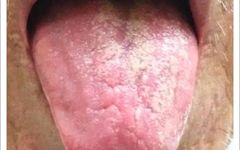Subscribe to topics and read fine articles

Click on Qi Huang Ming Shi → Top right corner of the homepage → Set as a star
★
Tongue Shape and Quality
The shape and quality of the tongue include aspects such as age (old or young), thickness (fat or thin), teeth marks, spots, and cracks, which mainly reflect the state of Zheng Qi (正气) and the functions of the organs, as well as the relationship between pathogenic factors and the body’s righteousness.
1. Old Tongue (图2-27、图2-28)
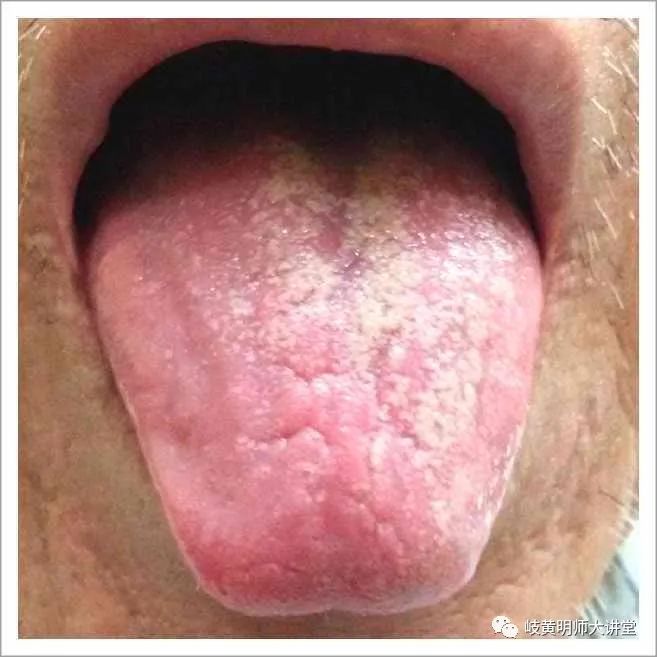 图2-27 Old Tongue 1
图2-27 Old Tongue 1
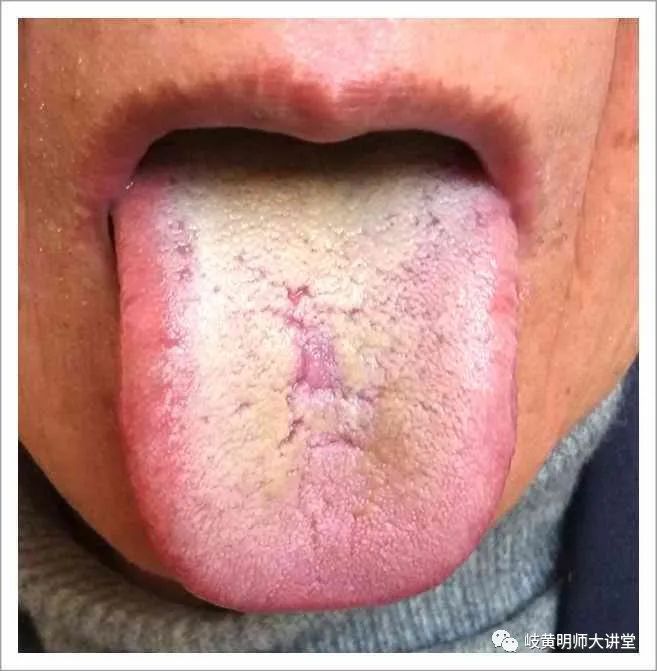 图2-28 Old Tongue 2
图2-28 Old Tongue 2
Tongue characteristics: The tongue body is firm and appears aged, with rough or shriveled texture, and the tongue color is darker.
Clinical significance: An old tongue is often seen in cases of pathogenic invasion, where Zheng Qi is not deficient, indicating a struggle between pathogenic factors and the body’s righteousness.
2. Pale and Tender Tongue (图2-29、图2-30)
 图2-29 Pale and Tender Tongue 1
图2-29 Pale and Tender Tongue 1
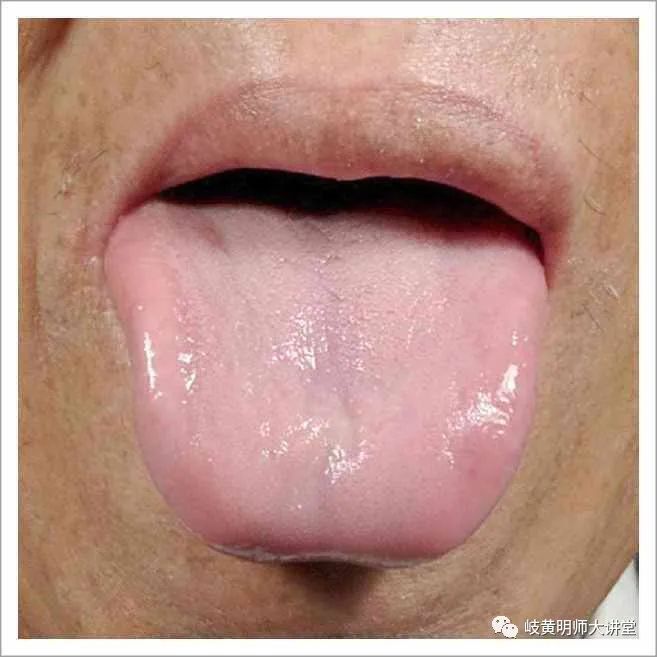 图2-30 Pale and Tender Tongue 2
图2-30 Pale and Tender Tongue 2
Tongue characteristics: The tongue body is swollen, tender, and delicate, with a light color.
Clinical significance: Commonly seen in cases of Qi and blood deficiency, and reduced organ function.
3. Red and Tender Tongue (图2-31、图2-32)
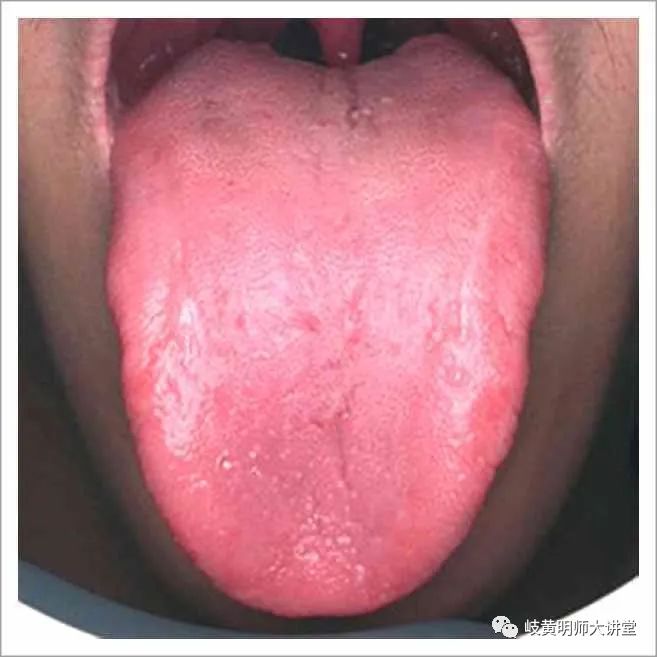 图2-31 Red and Tender Tongue 1
图2-31 Red and Tender Tongue 1
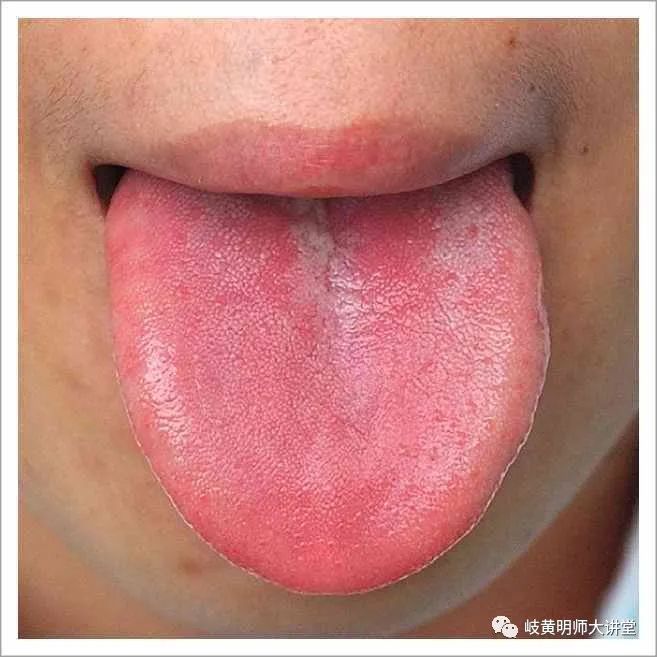 图2-32 Red and Tender Tongue 2
图2-32 Red and Tender Tongue 2
Tongue characteristics: The tongue body is plump and tender, with a reddish color.
Clinical significance: Indicates deficiency of both Qi and Yin.

4. Fat Tongue (图2-33、图2-34)
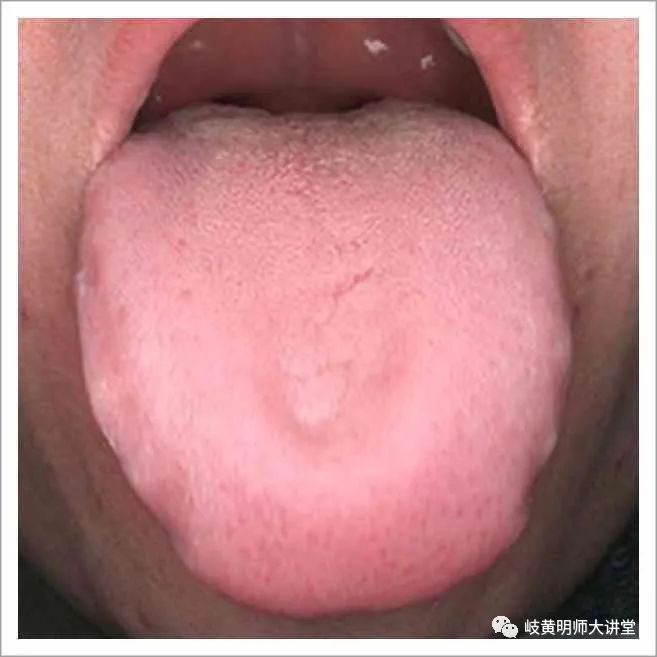 图2-33 Fat Tongue 1
图2-33 Fat Tongue 1
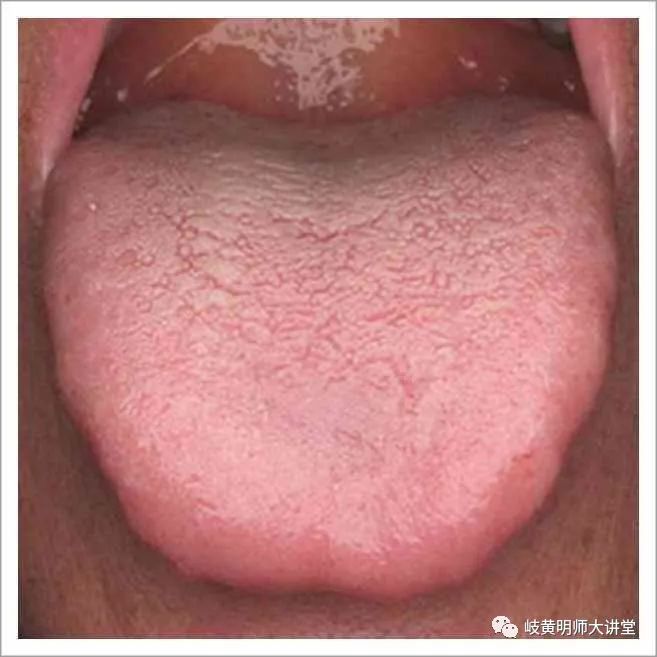 图2-34 Fat Tongue 2
图2-34 Fat Tongue 2
Tongue characteristics: The tongue body is larger than normal, extending to fill the mouth, possibly with teeth marks on the edges.
Clinical significance: Often caused by obstruction due to phlegm and dampness.
5. Pale Fat Tongue (图2-35、图2-36)
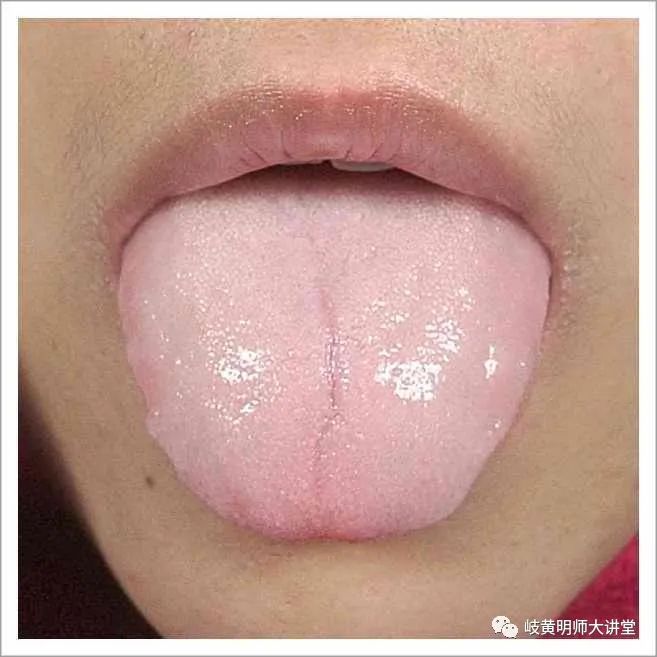 图2-35 Pale Fat Tongue 1
图2-35 Pale Fat Tongue 1
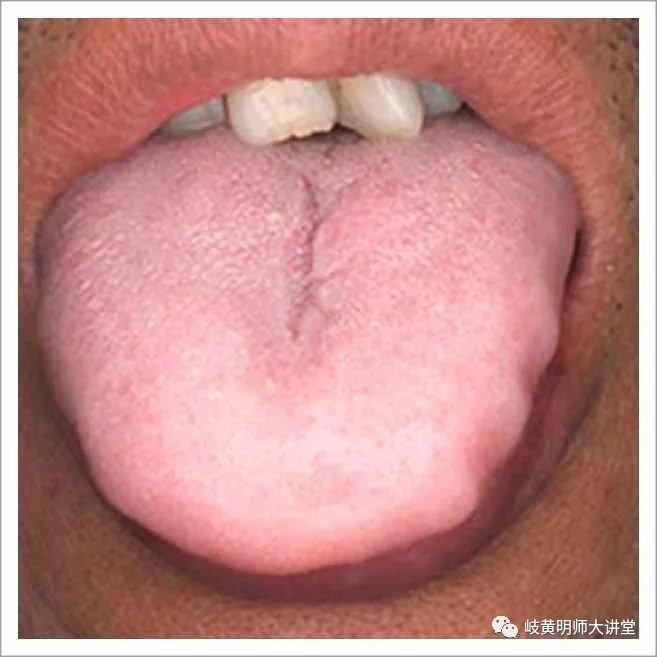 图2-36 Pale Fat Tongue 2
图2-36 Pale Fat Tongue 2
Tongue characteristics: The tongue color is pale, and the body is fat and tender, often with a slippery coating or teeth marks on the edges.
Clinical significance: Often due to deficiency of Spleen and Kidney Yang, with fluid not transforming, leading to stagnation of dampness.
6. Swollen Tongue (图2-37、图2-38)
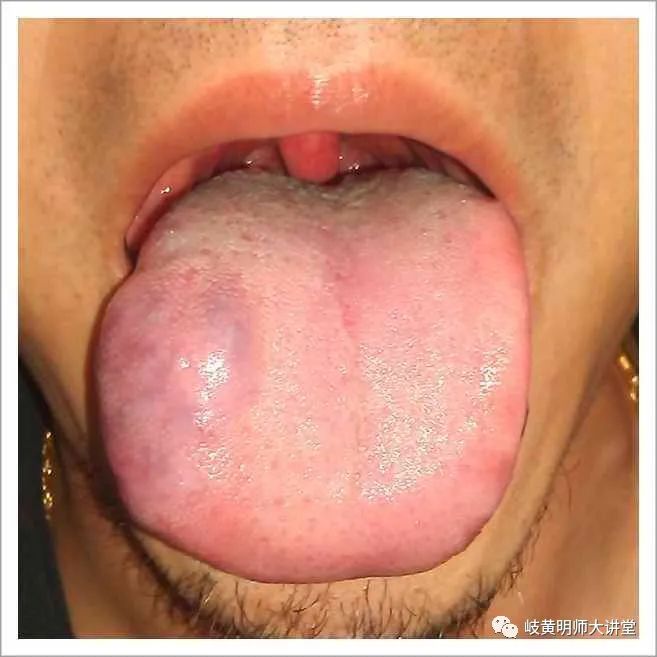 图2-37 Swollen Tongue 1
图2-37 Swollen Tongue 1
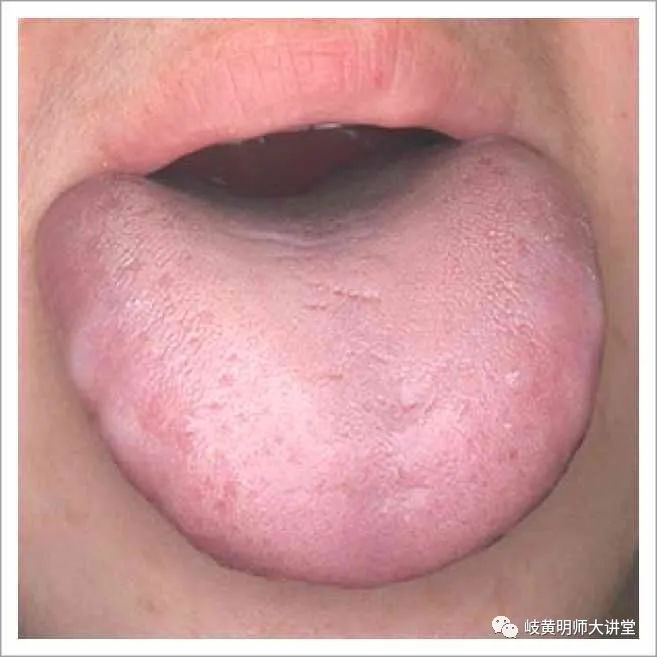 图2-38 Swollen Tongue 2
图2-38 Swollen Tongue 2
Tongue characteristics: The tongue body is swollen and thick, extending to fill the mouth, and may be unable to retract. The tongue color is often red or purplish.
Clinical significance: Commonly seen in cases of severe heat in the Heart and Spleen, or external damp-heat, and also in local tongue lesions.

7. Teeth-marked Tongue (图2-39、图2-40)
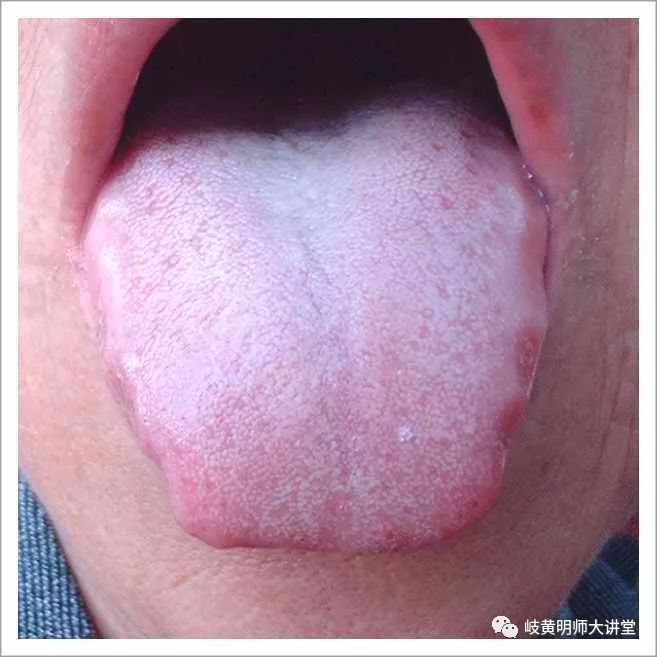 图2-39 Teeth-marked Tongue 1
图2-39 Teeth-marked Tongue 1
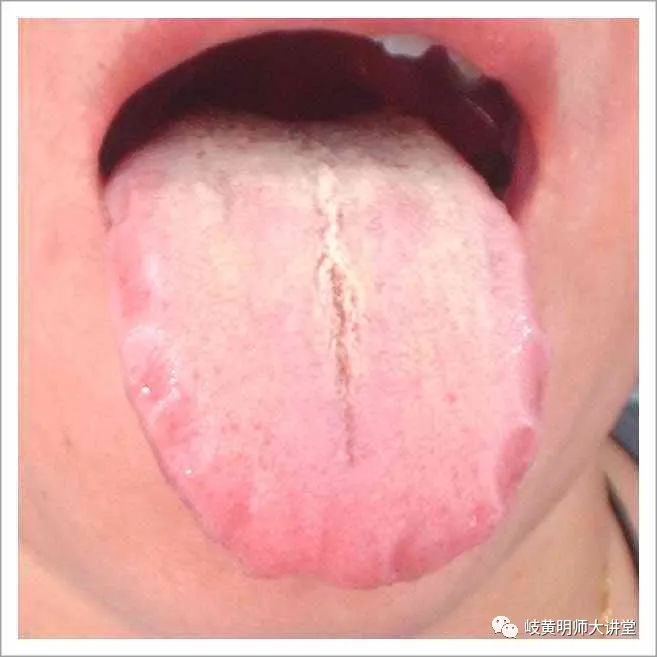 图2-40 Teeth-marked Tongue 2
图2-40 Teeth-marked Tongue 2
Tongue characteristics: The edges of the tongue have teeth marks, and the tongue body can be either swollen or not.
Clinical significance: A pale tongue with teeth marks often indicates Spleen deficiency or Qi deficiency, while a swollen tongue with many teeth marks often indicates Spleen deficiency or damp obstruction.
8. Red and Thin Tongue (图2-41、图2-42)
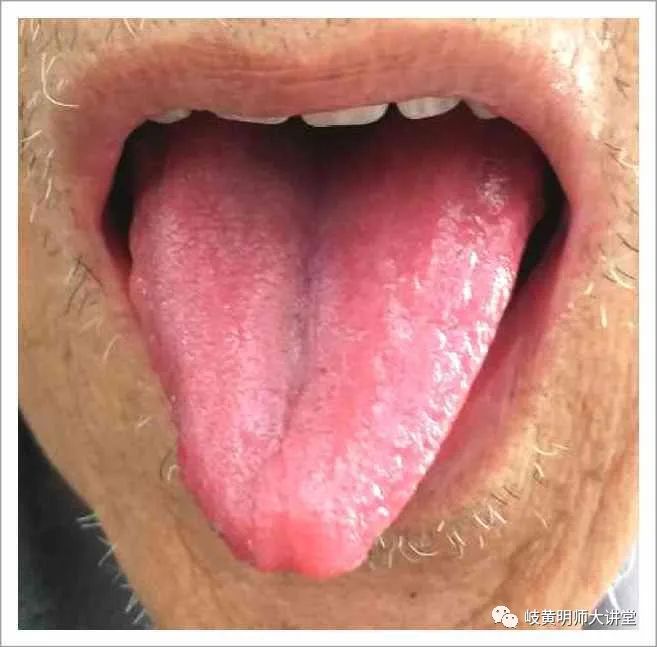 图2-41 Red and Thin Tongue 1
图2-41 Red and Thin Tongue 1
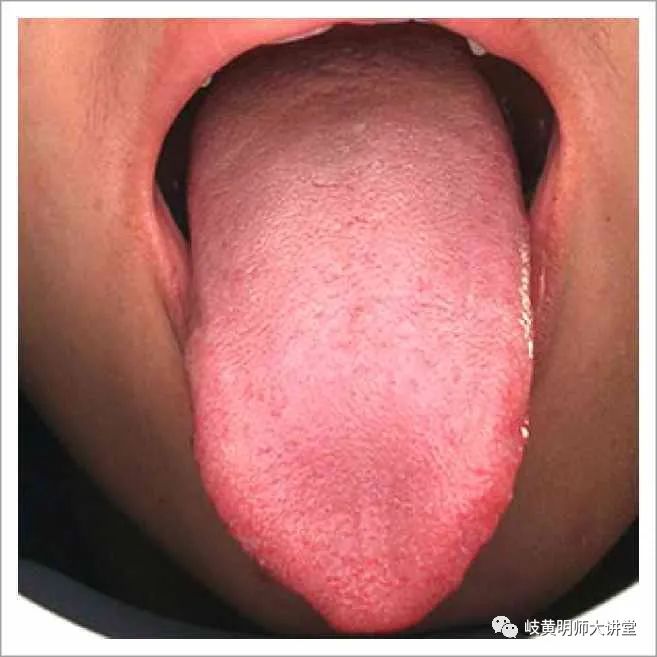 图2-42 Red and Thin Tongue 2
图2-42 Red and Thin Tongue 2
Tongue characteristics: The tongue body is thin, with a red or crimson color, and is dry with little or no coating.
Clinical significance: Indicates deficiency of both Qi and Yin or excess heat.
9. Pale and Thin Tongue (图2-43、图2-44)
 图2-43 Pale and Thin Tongue 1
图2-43 Pale and Thin Tongue 1
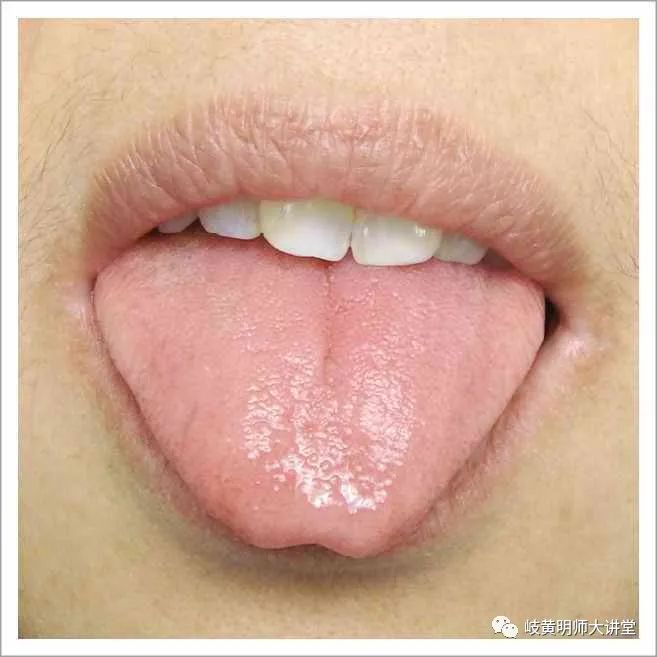 图2-44 Pale and Thin Tongue 2
图2-44 Pale and Thin Tongue 2
Tongue characteristics: The tongue body is thin, with a pale white color.
Clinical significance: Commonly seen in chronic illness with deficiency of both Qi and blood, leading to inadequate nourishment of the body.
10. Red Spot Tongue (图2-45、图2-46)
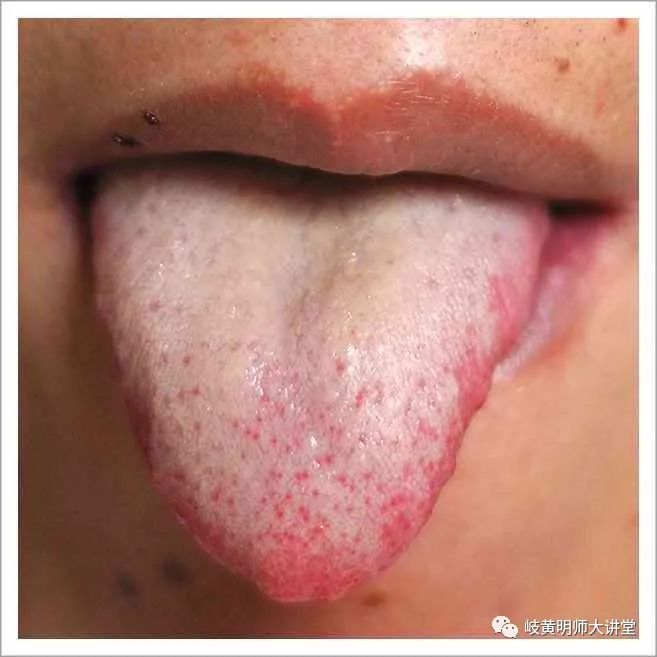 图2-45 Red Spot Tongue 1
图2-45 Red Spot Tongue 1
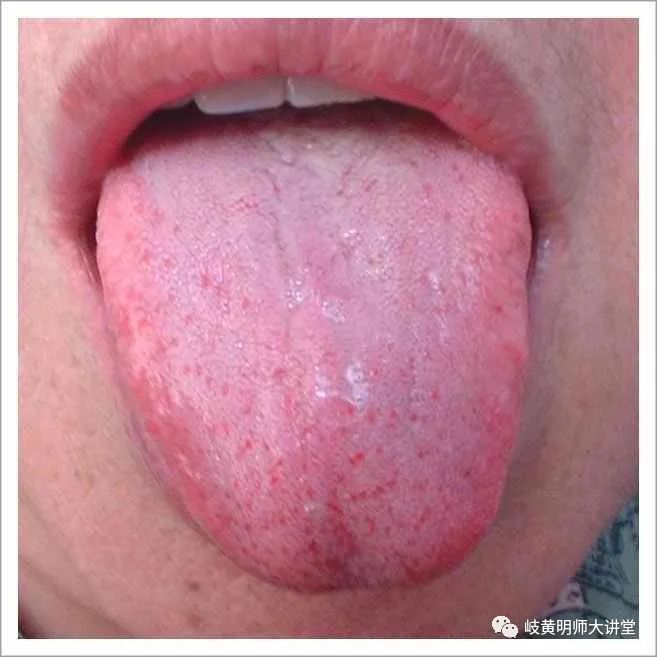 图2-46 Red Spot Tongue 2
图2-46 Red Spot Tongue 2
Tongue characteristics: The fungiform papillae are enlarged and increased in number, with congestion and edema, commonly seen on the edges and tip of the tongue.
Clinical significance: Indicates blood heat or internal heat in the organs.
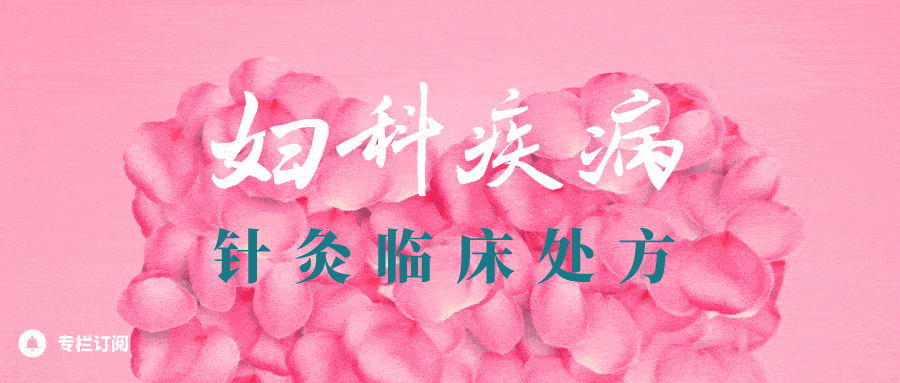
11. Thorny Tongue (图2-47、图2-48)
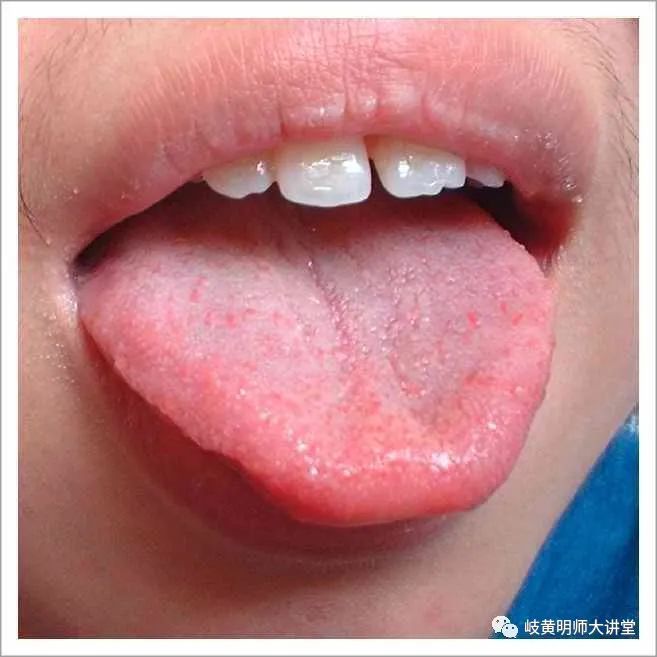 图2-47 Thorny Tongue 1
图2-47 Thorny Tongue 1
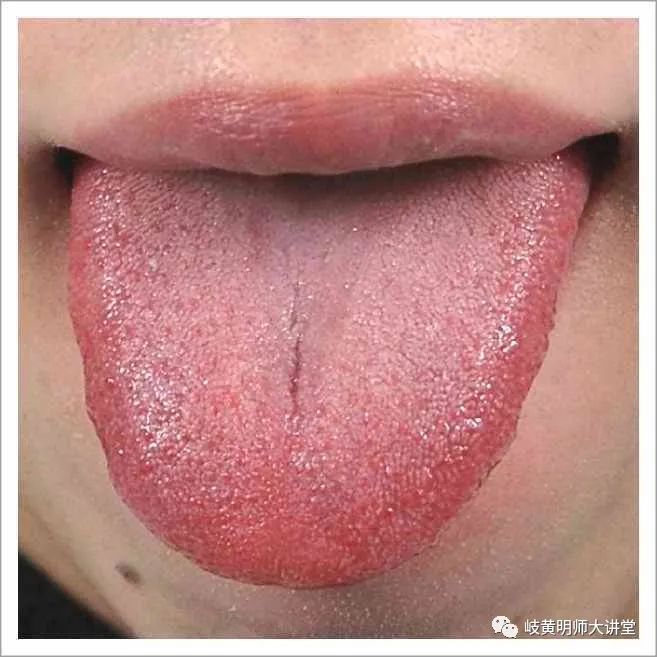 图2-48 Thorny Tongue 2
图2-48 Thorny Tongue 2
Tongue characteristics: The fungiform papillae are enlarged, protruding sharply, resembling thorns, and feel prickly to the touch.
Clinical significance: Indicates severe heat in the blood or excessive Yang heat in the organs.
Observing the color of the spots can also help estimate the state of Qi and blood circulation and the severity of the disease. For example, bright red spots indicate blood heat, dark purple spots indicate severe heat, and white spots indicate edema.
12. Cracked Tongue (图2-49、图2-50)
 图2-49 Cracked Tongue 1
图2-49 Cracked Tongue 1
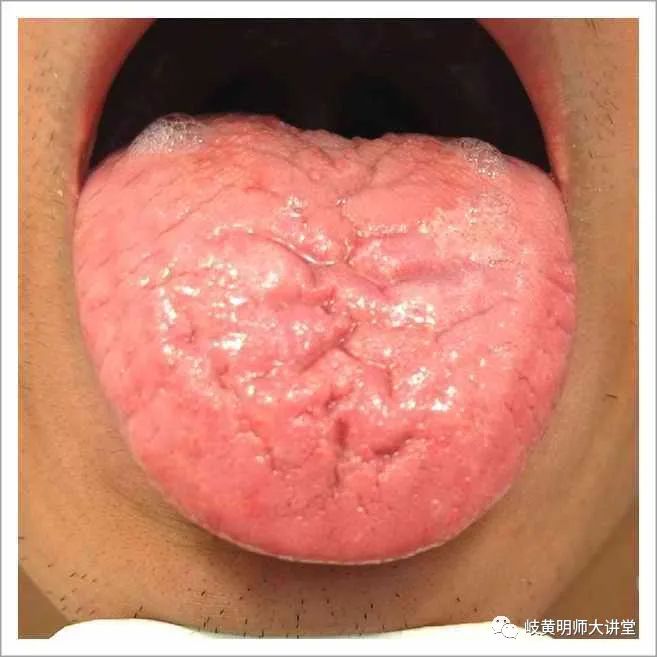 图2-50 Cracked Tongue 2
图2-50 Cracked Tongue 2
Tongue characteristics: Various shapes of cracks and fissures appear on the tongue surface, varying in depth and number, collectively referred to as cracked tongue. Cracks without coating are often pathological; if covered with coating, they are often congenital. Based on tongue color, they can be classified into pale cracked tongue and red cracked tongue.
Clinical significance: Indicates deficiency of essence and blood, or depletion of Yin fluids, representing malnourishment of the tongue body and even systemic malnutrition. A pale tongue with cracks indicates blood deficiency; a red tongue with cracks indicates heat damaging fluids and depletion of Yin fluids.
Appendix 1 Pale Cracked Tongue (图2-51、图2-52)
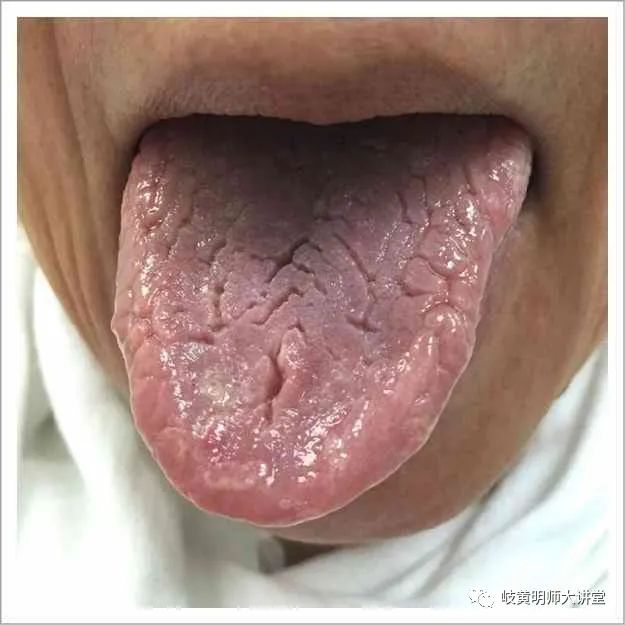
图2-51 Pale Cracked Tongue 1
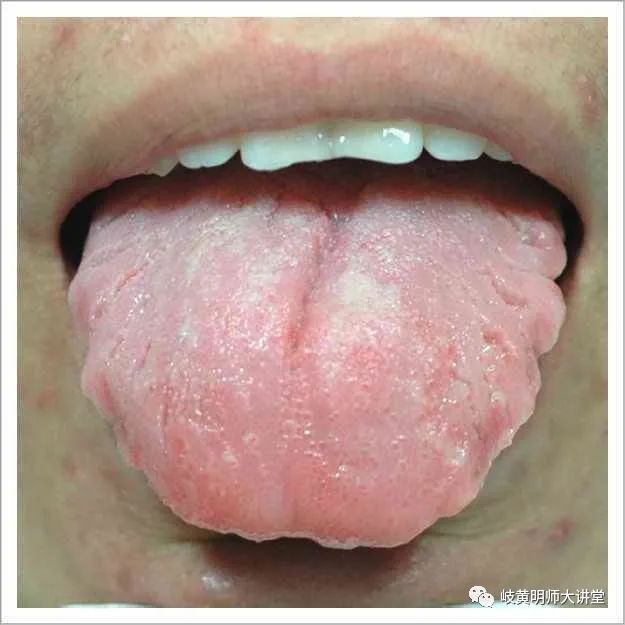
图2-52 Pale Cracked Tongue 2
Tongue characteristics: The tongue color is pale with cracks.
Clinical significance: Often indicates blood deficiency or Spleen deficiency, leading to malnourishment of the tongue body.
Appendix 2 Red Cracked Tongue (图2-53、图2-54)
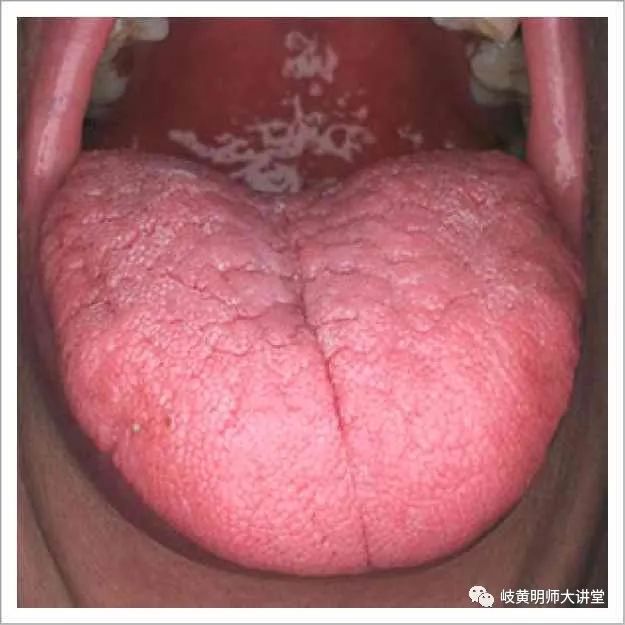
图2-53 Red Cracked Tongue 1
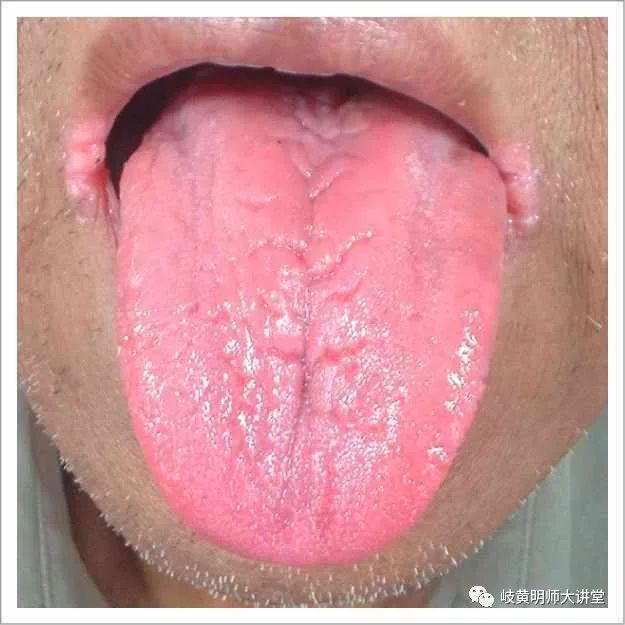
图2-54 Red Cracked Tongue 2
Tongue characteristics: The tongue color is red with cracks.
Clinical significance: Indicates heat damaging fluids and depletion of Yin fluids.
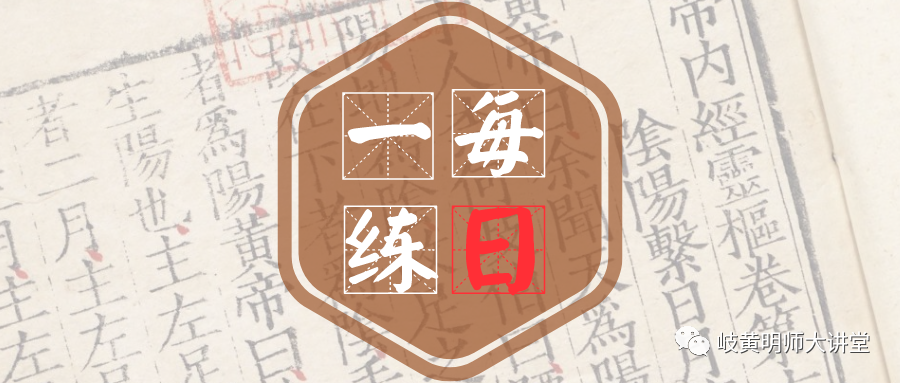
13. Tongue Bleeding (图2-55)
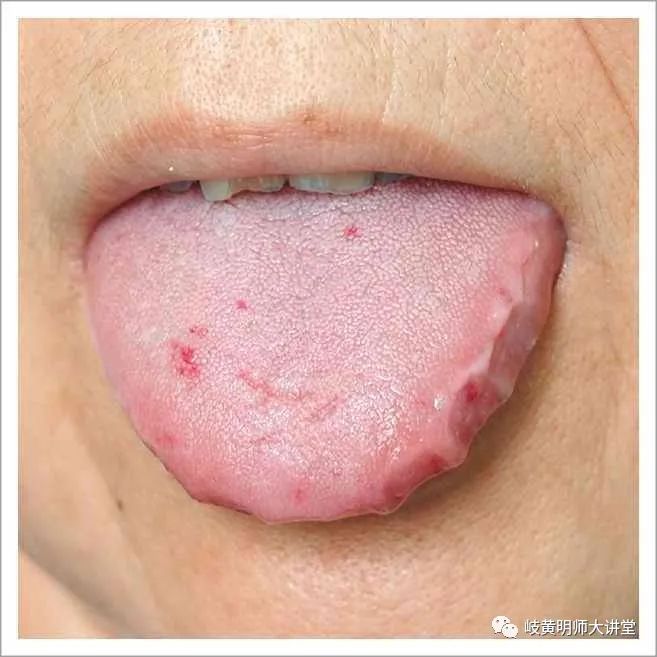 图2-55 Tongue Bleeding
图2-55 Tongue Bleeding
Tongue characteristics: Presence of bleeding spots on the tongue.
Clinical significance: Can be caused by excess heat, deficiency heat, or Qi deficiency. A red or swollen tongue with significant bleeding often indicates excess heat; bleeding with a pale tongue and little coating often indicates deficiency heat; minimal bleeding with a pale red tongue often indicates Spleen deficiency, where Qi fails to hold blood.
14. Tongue Ulcer (图2-56、图2-57)
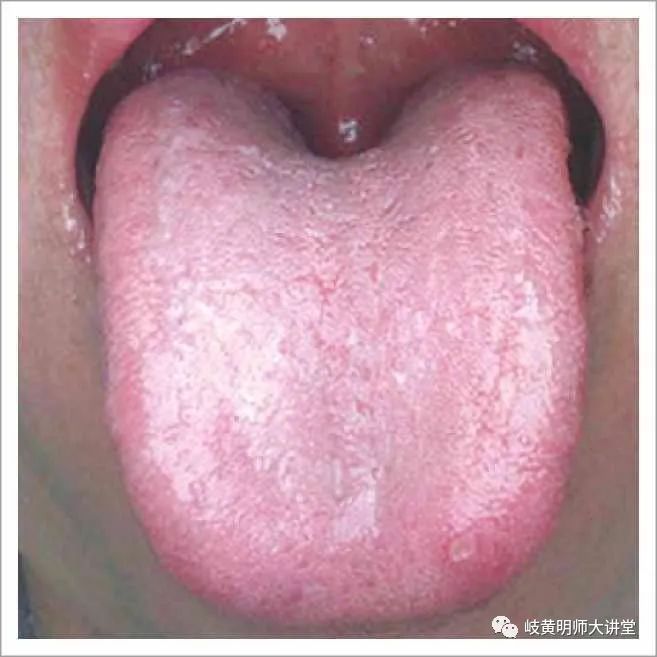 图2-56 Tongue Ulcer 1
图2-56 Tongue Ulcer 1
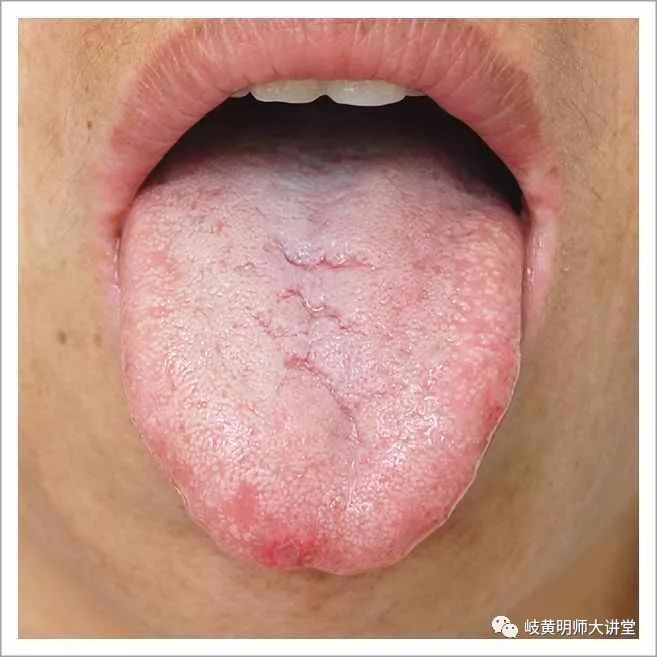 图2-57 Tongue Ulcer 2
图2-57 Tongue Ulcer 2
Tongue characteristics: Presence of ulcers on the tongue, varying in size and painful.
Clinical significance: Often caused by excessive heat in the Heart or Stomach, or deficiency heat, or injury to both Qi and Yin. Initial occurrences are often related to Heart fire or Stomach heat; recurrent cases are often seen in deficiency heat or Qi and Yang deficiency.

-
Traditional Chinese Medicine Tongue Diagnosis: Identification of Tongue Spirits
-
Traditional Chinese Medicine Tongue Diagnosis: 11 Types of Tongue Color Diagnosis
Join the WeChat Pure Group, no spam, learn together every day(Valid for 7 days, please check the latest articles if expired)



